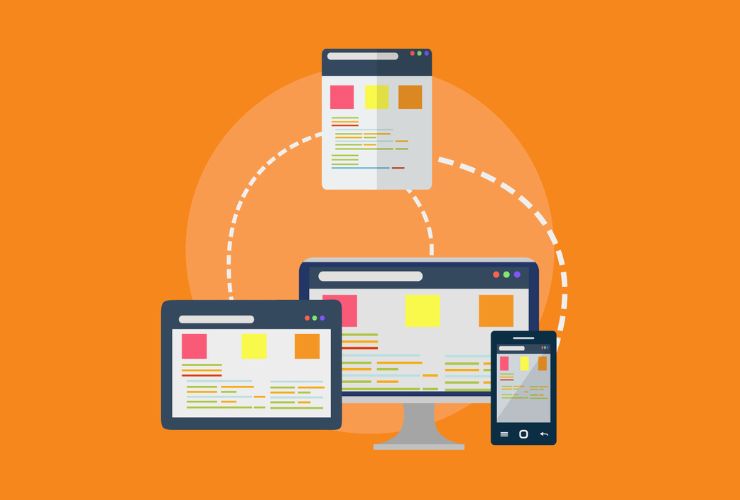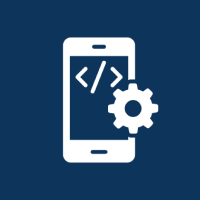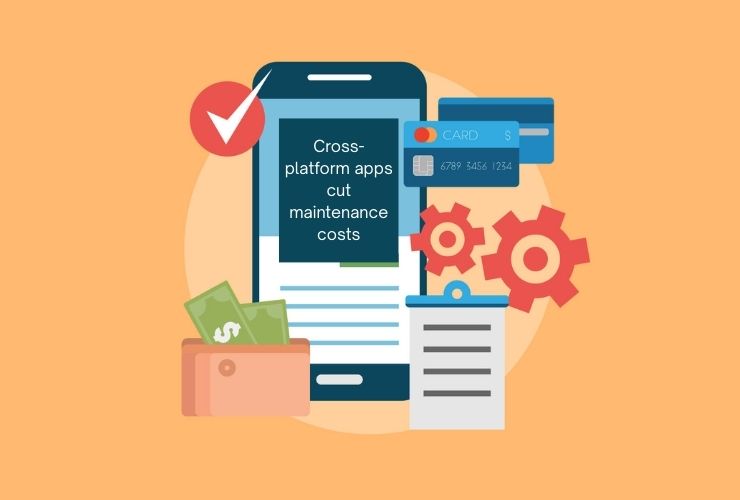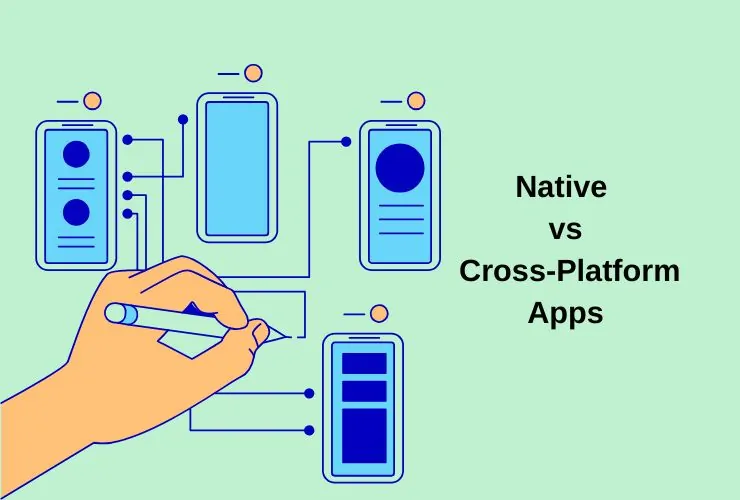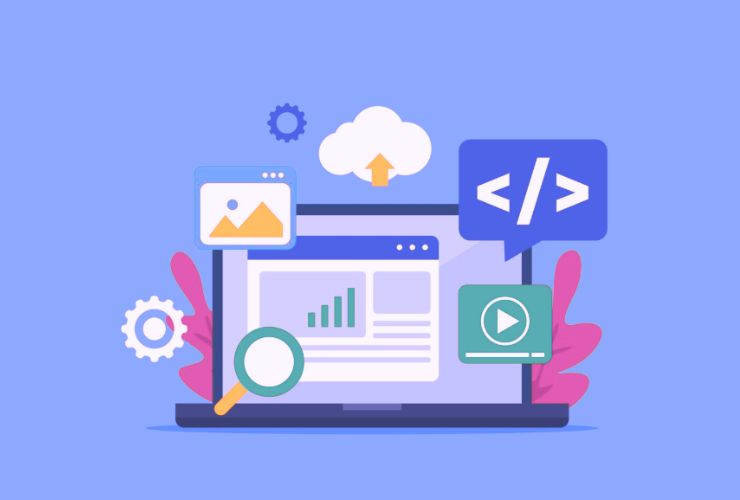In today’s rapid digital age, companies have to continue producing goods and services fast but not too costly. Mobile app development is no exception, but with pressure even higher. Companies should publish on both iOS and Android to stay competitive, but it can be too pricey and time-consuming to maintain two different codebases. Cross-platform app development has come in as an extremely desirable solution.
But before all this, it’s worth considering whether cross-platform is even the right approach for your company. In this post, we’ll discuss what cross-platform app development is, its pros and cons, and when precisely it’s most strategically feasible.
What Is Cross-Platform App Development?
Cross-platform application development is the process of creating apps that are run on different operating systems—most typically iOS and Android—on the basis of a single codebase. Instead of creating two apps separately in platform-native programming languages (Swift for iOS, Kotlin/Java for Android), app developers employ frameworks such as Flutter, React Native, and Xamarin to create apps with most of their code in common.
These frameworks enable developers to code once and deploy many times across several platforms, yet still provide native-like experiences. This can greatly simplify the development process, particularly for companies that need to reach the market sooner or have limited technical resources at their disposal.
Advantages of Cross-Platform App Development
1. Reduced Time-to-Market
One of the greatest benefits of cross-platform development is velocity. With a shared codebase, development teams can write once and ship twice across iOS and Android, significantly saving development time. This is especially valuable for startups or companies looking to launch an MVP (Minimum Viable Product) rapidly to market and validate assumptions within the marketplace.
2. Lower Development Costs
Maintaining and having two native apps is expensive, particularly in terms of employing respective expertise developers. Cross-platform development reduces this need to some extent by allowing the same development team to develop the entire app. It saves both development cost initially and also maintenance cost.
3. Consistency of User Experience
Contemporary cross-platform libraries offer plenty of pre-built UI elements that look similar to native look and feel. This guarantees that the user across various platforms has an identical experience. Although some subtleties will be slightly different from an entirely native app, the overall flow of the user is not disrupted and is natural.
4. Smoother Maintenance and Updates
It is simpler to patch and repair bugs in one codebase. Once a fix or feature has been made, you can roll it out on both platforms at the same time. This enables faster iteration, less QA cycles, and a faster response to user feedback.
5. Broader Market Reach
Simultaneous release on Android and iOS exposes your business to more prospective viewers. Going native-first to development usually places you in the situation of needing to decide one platform where you’ll focus first, and this creates a delay for entry into the secondary marketplace. Cross-platform enables such a trade-off to be reduced.
Drawbacks of Cross-Platform App Development
1. Performance Limitations
Even with huge advances in cross-platform solutions, performance may lag behind native apps—particularly for those involving intense processing, real-time graphics, or high-density graphical material. Native app development allows for close hardware and API integration, which may be essential in high-performance applications such as games or AR/VR applications.
2. Platform-Specific Feature Challenges
Native device features like GPS, camera, Bluetooth, or push notifications might be more difficult to access in cross-platform apps. While third-party libraries and plugins assist, they will not always give direct access to platform functionality or age over time, which would leave native code workarounds.
3. Framework Ecosystem Dependence
When you go with a cross-platform framework, you are at the mercy of its community of support and continuing development. If the framework becomes outdated or is no longer supported actively, your app could fall behind in updates, be less compatible, and fail to get long-term support. Select a framework with a solid track record and good community (like Flutter or React Native).
4. UI/UX Limitations
Although most users won’t mind minor differences, some platform-specific gestures, transitions, and design patterns can’t be emulated exactly. For pixel-perfect designed or UX convention-based platforms that depend on platform-specific UX conventions, this might be a drawback.
When Is Cross-Platform the Best Solution?
Cross-platform app development is especially suited for particular situations. If:
- You’re building an MVP or proof of concept and have to validate your idea in a hurry on both Android and iOS.
- You’re a small company or startup with scarce developer resources and funds.
- Your app has normal functionality and doesn’t take much advantage of high-end device capabilities.
- You want to simplify long-term maintenance by being able to maintain a single codebase.
- You require shorter iteration cycles to react to user or market feedback.
In those situations, cross-platform can enable you to move more quickly, reach users earlier, and build a competitive advantage without draining your resources.
When Native Development May Be the Better Choice
Native development remains the superior choice for particular kinds of projects despite the benefits. Go native when:
- Your app requires world-class performance, like 3D games, real-time media processing, or AR apps.
- You require extensive integration with platform-native APIs or hardware features.
- You need a platform-specific look or interaction pattern, e.g., Apple’s Human Interface Guidelines or Material Design.
- Long-term scalability is most important and you need ultimate control over platform-specific optimizations.
In these situations, the additional time and effort of native development might be more than worthwhile due to the enhanced performance, smoother user experience, and access to lower-level system features.
Conclusion
Cross-platform development is a perfect combination of speed, efficiency, and cost-effectiveness—and is a highly desirable option for most companies, particularly those with new product launches or operating under tight budget constraints. It’s not a one-size-fits-all, though.
It is optimum for your app depending upon goals, features desired, user needs, and expansion plans. If your app isn’t too complicated and you have to ship sooner rather than later, then cross-platform will allow you to make a decent headway. But for performance, UX accuracy, or native feel, it might still be worth additional funds.”.
Spend time evaluating your product’s own specific needs will ensure that your development strategy aligns with your business vision.

